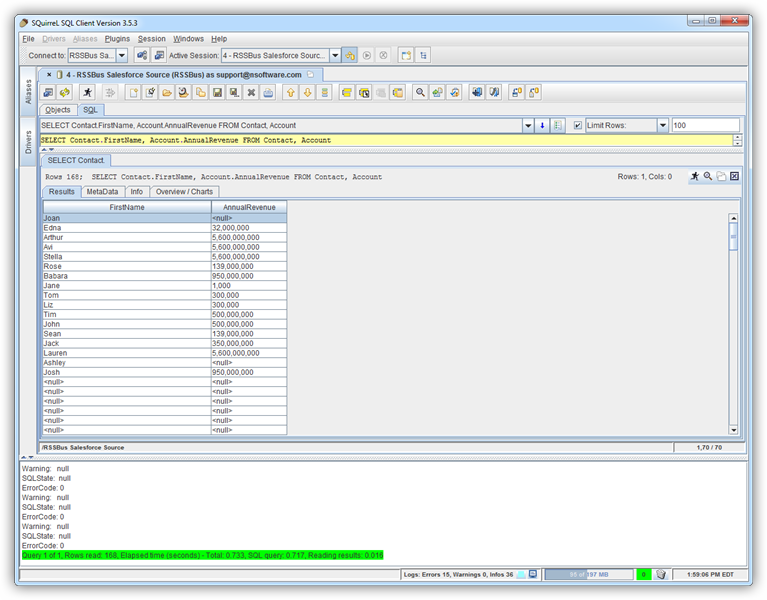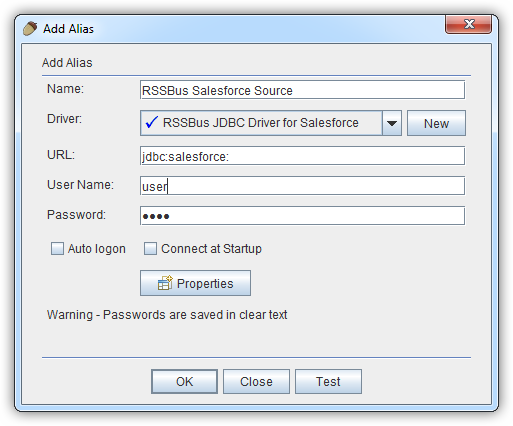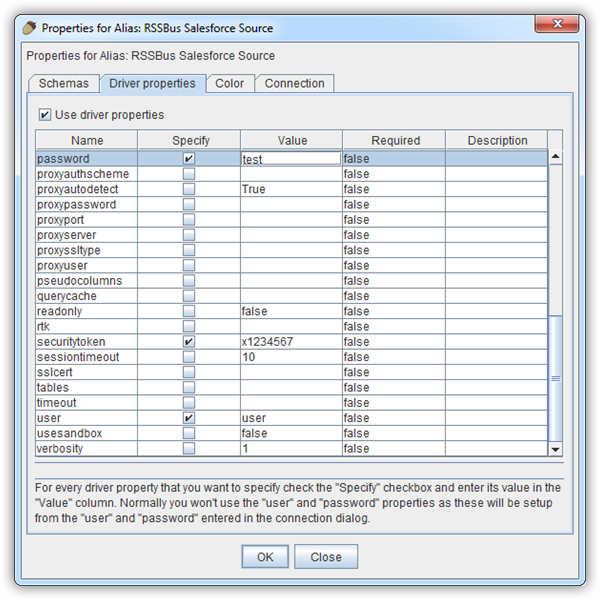Discover how a bimodal integration strategy can address the major data management challenges facing your organization today.
Get the Report →How to connect to SAP Data with Squirrel SQL client
Connect to SAP data and execute queries in the Squirrel SQL Client.
The CData JDBC Driver for SAP enables you to execute queries to SAP data in tools like Squirrel SQL Client. In this article, you will create a JDBC data source for SAP data and execute queries.
Add the JDBC Driver for SAP
Follow the steps below to add the driver JAR.
- In Squirrel SQL, click Windows -> View Drivers.
- Click the plus icon to open the Add Driver wizard.
- In the Name box, enter a user-friendly name for the driver; for example, CData JDBC Driver for SAP.
- In the Example URL box, enter jdbc:saperp:
- In the Extra Class Path tab, click Add.
- In the file explorer dialog that opens, select the JAR file for the driver, located in the lib subfolder of the installation directory.
- Click List Drivers to populate the Class Name menu with the class name for the driver, cdata.jdbc.saperp.SAPERPDriver.
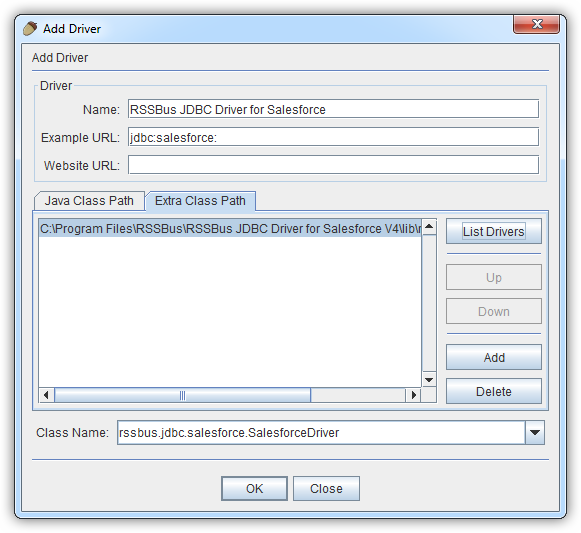
Define Connection Properties
Follow the steps below to save connection properties in the driver alias.
- Click Windows -> View Aliases.
- In the pane that lists the aliases, click the plus icon.
In the Add Alias wizard that opens, the following fields are required for the JDBC driver:
- Name: Enter a name for the alias; for example, CData SAP Source.
- Driver: Select the CData JDBC Driver for SAP.
- URL: Enter jdbc:saperp:
![The alias definition, containing the connection parameters. (Salesforce is shown.)]()
- If you want to define any additional properties, click Properties.
- In the Driver properties tab of the dialog that appears, select the Use driver properties checkbox.
- In the Specify column, select the checkboxes for the required connection properties.
The driver supports connecting to an SAP system using the SAP Java Connector (SAP JCo). Install the files (sapjco3.jar and sapjco3.dll) to the appropriate directory for the hosting application or platform. See the "Getting Started" chapter in the help documentation for information on using the SAP JCo files.
In addition, you can connect to an SAP system using Web services (SOAP). To use Web services, you must enable SOAP access to your SAP system and set the Client, RFCUrl, User, and Password properties, under the Authentication section.
For more information, see this guide on obtaining the connection properties needed to connect to any SAP system.
Below is a typical connection string:
jdbc:saperp:Host=sap.mydomain.com;User=EXT90033;Password=xxx;Client=800;System Number=09;ConnectionType=Classic;Location=C:/mysapschemafolder;![Connection properties automatically detected by Squirrel SQL. (Salesforce is shown.)]()
- In the dialog that appears after you click OK, click connect to test the connection.
Discover Schemas and Query SAP Data
After the metadata has loaded, a new tab for the SAP data source is displayed. On the Objects subtab, you can discover schema information, such as the available tables and views.
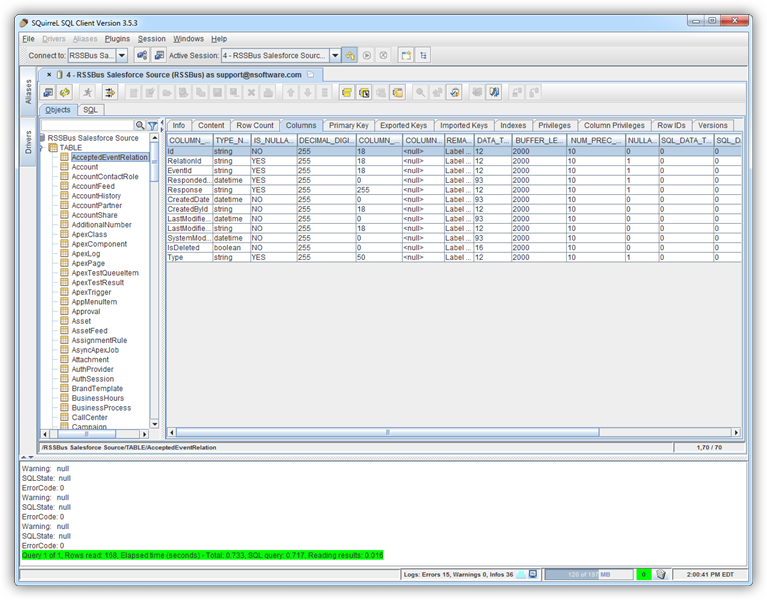
To view table data, select the table on the Objects tab. The table data is then loaded in a grid on the Content tab.
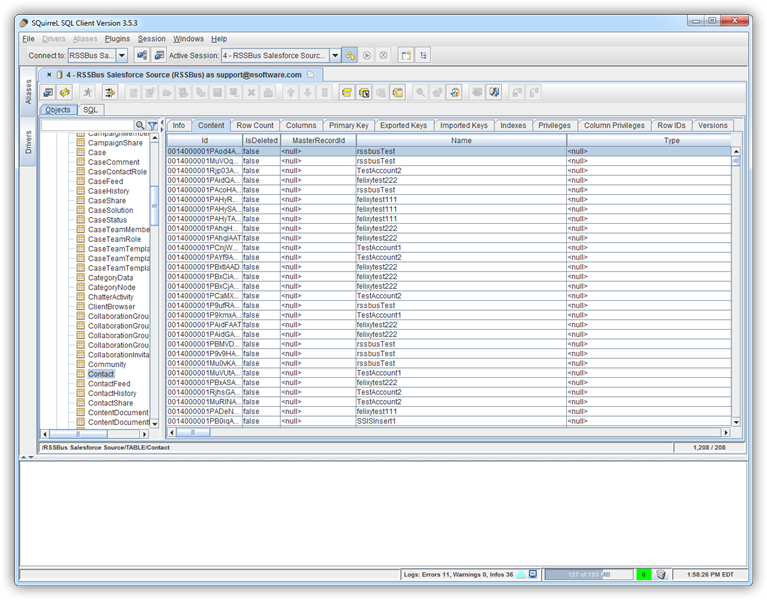
To execute an SQL query, enter the query on the SQL tab and then click Run SQL (the runner icon). For example:
SELECT MANDT, MBRSH FROM MARA
